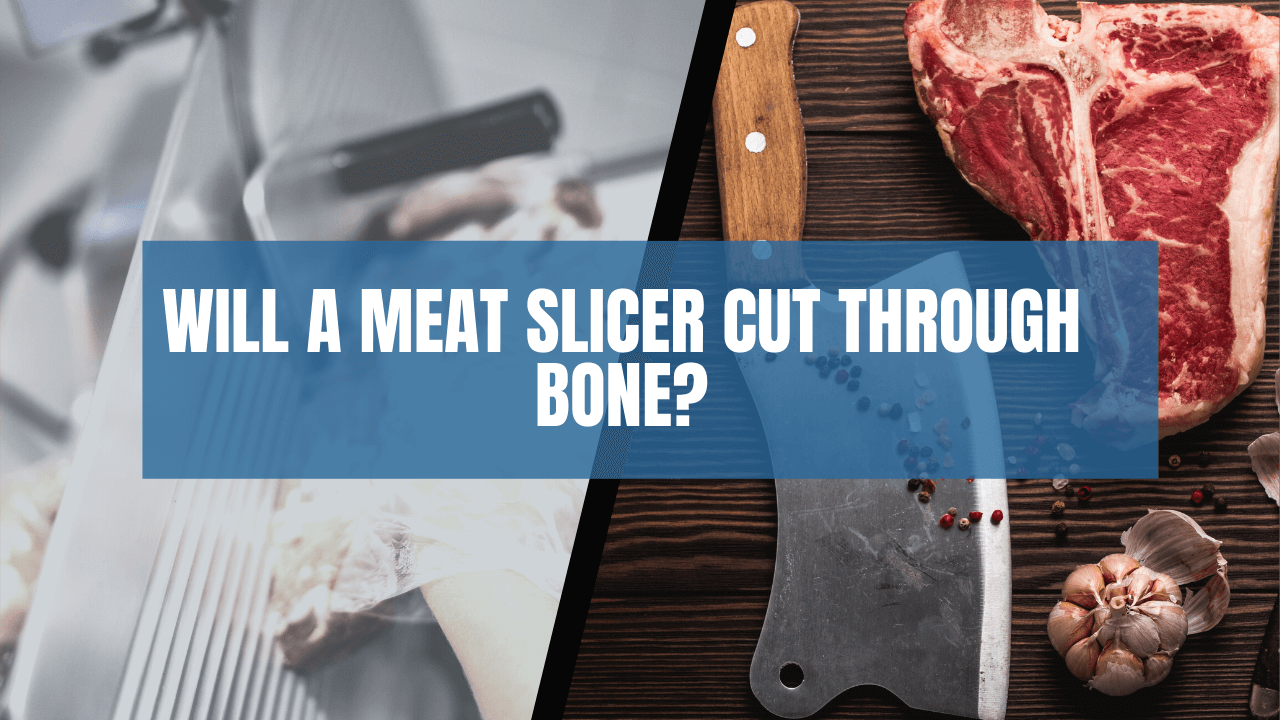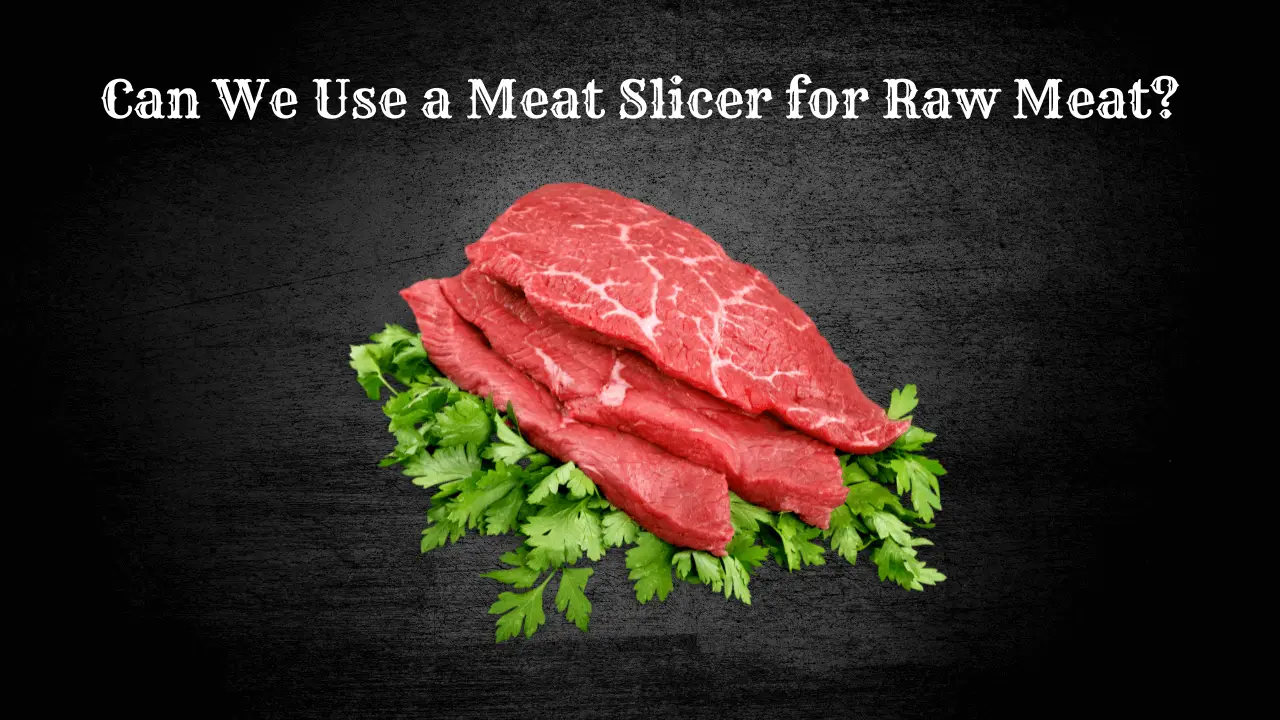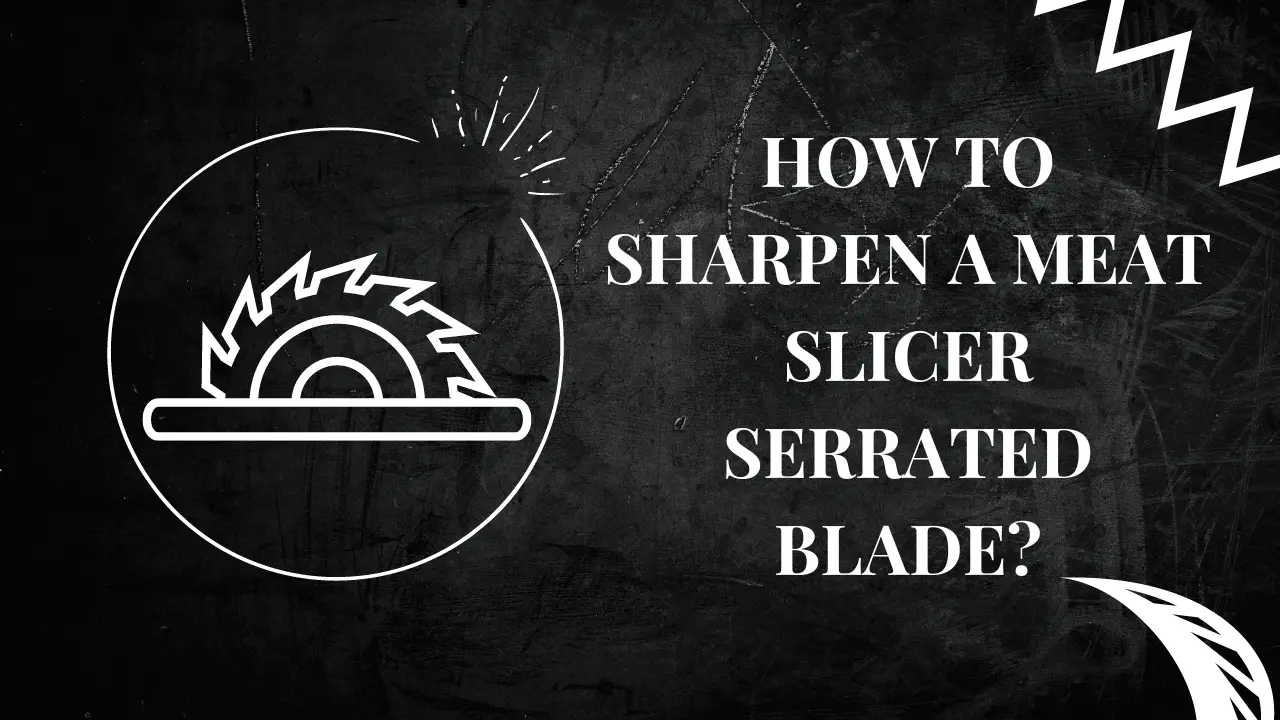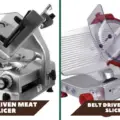Food slicers are great kitchen appliances that help you prepare food quickly and efficiently. However, they can also be dangerous if not used properly. It’s important to keep food safety in mind when using a slicer. Avoid the spread of bacteria by regularly cleaning and sanitizing the machine, blades, and equipment. Clean blades with soap and warm water after each use, then rinse and dry thoroughly. Sanitize all areas that come into contact with food, such as the slicer, cutting board, and countertop. Ensure all equipment is stored in a cool, dry location away from direct sunlight.
Why Safety Is Important When Working With A Food/Meat Slicer?
Food/meat slicers are powerful machines that quickly and efficiently slice food products. However, these machines can be dangerous if handled properly and cautiously. That is why it is important to understand the safety precautions necessary when working with a food/meat slicer. With proper care and attention, you can ensure your safety and those around you when using a food/meat slicer.
How To Stay Safe When Working With A Food/Meat Slicer?
- Proper Training: Every worker using a food/meat slicer must be properly trained on the machine’s operation, safety, and cleaning. They must understand how to use it correctly so they don’t cut themselves or anyone else.
- Wear cut-resistant gloves: Cut-resistant gloves are important for protecting your hands from accidental cuts while working with a food slicer. Be sure always to wear them when operating a food slicer.
- Keep the work area free of clutter: Clutter can easily get in the way of the slicer or cause it to malfunction. Ensure that any tools and utensils used near the slicer are placed away from it, too.
- Focus on the task: Maintaining focus is important when working with a food/meat slicer. Keeping an eye on the machinery and not becoming distracted will help ensure you don’t make any mistakes.
- Never push meat with bare hands: It is extremely important never to push meat with your bare hands while using a slicer, as this could lead to injury. The slicer’s blade is sharp and unprotected, so it’s best always to use caution when handling anything around it. Wear protective gloves or utensils such as tongs or a pusher block when pushing food through the slicer.
- Never reach across the slicer: If the slicer is on, always move around the machine to reach for items. Reaching across a running slicer can cause your clothing or items to get caught in the blade, leading to serious injury. Make sure that all parts of your body are clear of the cutting surface at all times.
- Lock the blade when not in use: You should always lock it when it’s not. This will prevent accidental cuts or injuries while handling a food/meat slicer. Ensure the locking mechanism is secure and can’t be released easily by accident. Explain this safety procedure as part of your training program for new employees.
- Clean with caution: It is important to remember that a food/meat slicer blade is extremely sharp, so use caution when cleaning the machine. Unplug the slicer, and wear protective gloves to avoid any potential cuts. Using hot water and a non-abrasive detergent or degreaser, clean each slicer part with a soft cloth or sponge. Rinse thoroughly using clean water and dry all parts of the slicer before reassembling. For more difficult-to-clean areas such as where the blade meets the cutting plate, use a can opener-like tool to scrape any residue away.
- Never tamper with the safety switch: The safety switch is an important part of any slicer. It can differ between a safe slicing session and a potentially dangerous one. Never attempt to bypass or override the safety switch by taping it down, as this could lead to serious injury.
- Purchase a Slicer with a Covered Blade: If safety is a priority for you, then purchasing a slicer with a covered blade should be your top priority. A covered blade protects your hands from direct contact with the blade and minimizes the risk of an accidental cut.
- Use Lockout/Tagout Procedures When Cleaning: Accidents can happen when someone cleans or maintains a meat slicer. To help minimize the risk, you should lock out and tag the machine so that no one else can access it while you are working on it. This will ensure that everyone stays safe while the work is being done.
FAQs
Are food slicers only used in commercial kitchens?
No, food slicers can be used in commercial and residential settings, depending on the needs and requirements.
Can I use a regular knife instead of a slicer?
While a regular knife can be used for slicing, food slicers provide more precision and efficiency, especially when dealing with large quantities or achieving consistent thickness.
Can I use a food slicer for slicing frozen foods?
Using a food slicer for slicing frozen foods is not recommended as it can damage the blades and affect the slicer’s performance. Allow frozen foods to thaw before slicing them.
How often should I clean and sanitize my food slicer?
It is important to clean and sanitize your food slicer after each use to prevent cross-contamination and ensure food safety. Follow the manufacturer’s guidelines for cleaning and sanitizing procedures.
What should I do if the food slicer blade becomes dull?
If your food slicer blade becomes dull, refer to the manufacturer’s instructions for sharpening or replacing the blade. A dull blade can affect the slicing quality and increase the risk of accidents.
Are there any safety features I should look for when purchasing a food slicer?
When purchasing a food slicer, look for safety features such as blade guards, safety interlock mechanisms, and emergency stop buttons. These features provide added protection and help prevent accidents.
Conclusion
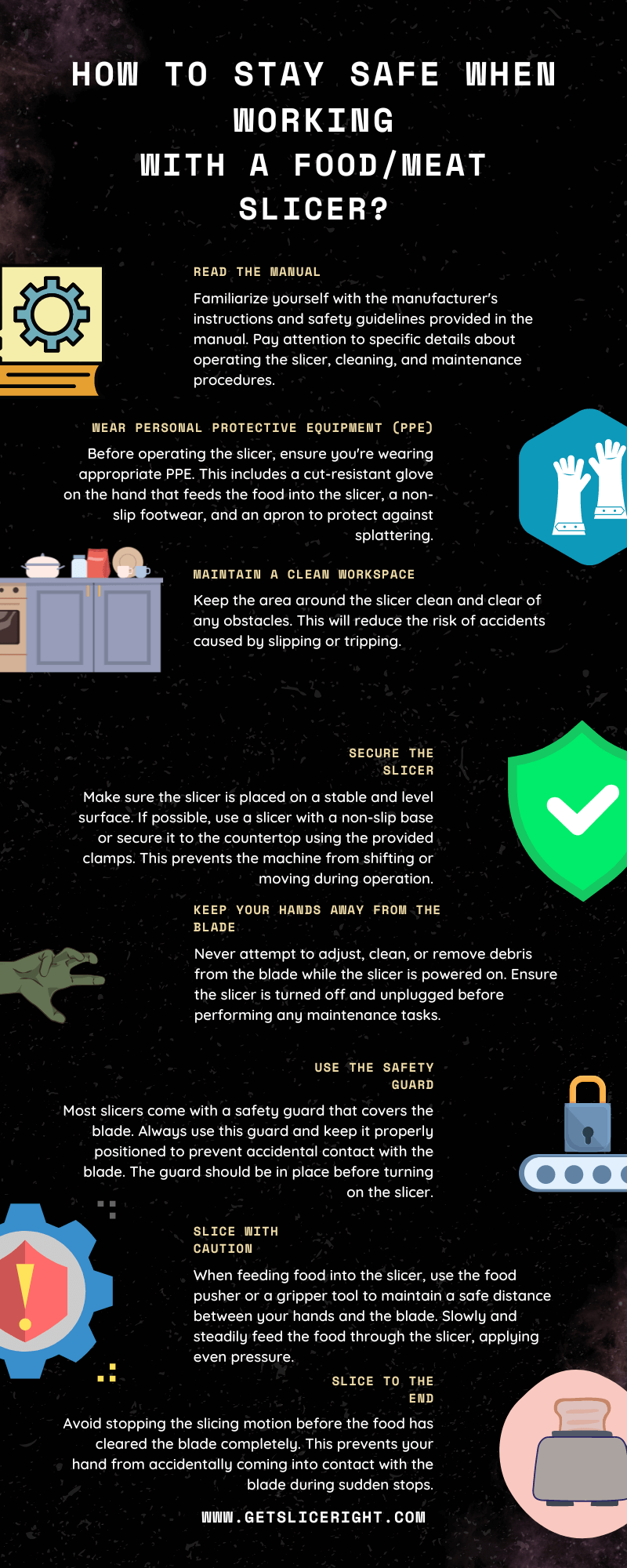
Working with a food/meat slicer can be efficient and convenient. Still, it is essential to prioritize safety. By understanding the risks involved, preparing properly, following safe handling techniques, and maintaining the slicer correctly, you can significantly reduce the likelihood of accidents and injuries. Remember to prioritize safety, stay focused, and be proactive in implementing the necessary safety measures. With the right precautions in place, you can enjoy the benefits of a food/meat slicer while ensuring your well-being and the well-being of those around you.

Mario Batali is a renowned author, food enthusiast, and passionate chef who has dedicated his life to exploring the world of culinary arts. With a love for sharing his knowledge and experiences, Mario has become a prominent figure in the food blogging community, inspiring countless readers with his creativity and expertise.
In addition to his culinary prowess, Mario Batali is also a talented writer with a flair for engaging storytelling. He launched his own food blog to share his recipes, cooking tips, and personal experiences in the kitchen. Over time, Mario’s blog gained a loyal following of food enthusiasts who appreciate his unique approach to cooking and his dedication to using only the finest ingredients.
Mario Batali’s passion for food and his commitment to sharing his knowledge with others have made him a true inspiration in the world of culinary arts. Through his blog, cookbooks, and public appearances, Mario continues to spread his love of food and the joy of cooking with his ever-growing fanbase.

